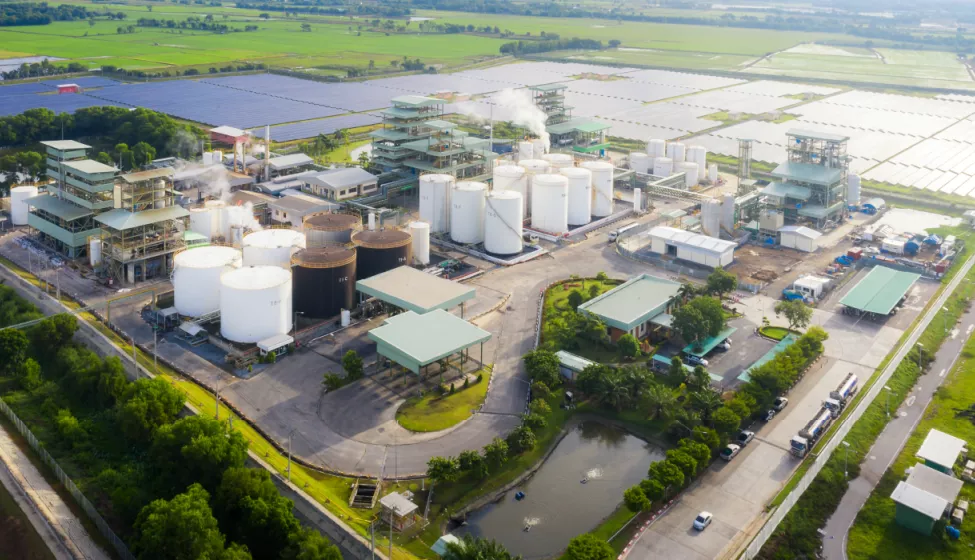September 10, 2020
2020 will be remembered for a confluence of extreme events: the COVID-19 pandemic, reconfiguration of social and work spaces, supply chain disruptions, mass unemployment, rent strikes, aggressive stimulus spending, and social unrest. State and local governments are seeing their budgets curtailed, and many companies are seeing or will see their credit ratings plummet and have filed or may file for bankruptcy.
Times of extreme economic uncertainty and volatility raise the risk that formal and informal business partners may not be able to pay their share of financial obligations or uphold their end of agreements. The risk of nonperformance by business partners is often referred to as counterparty risk or default risk. While counterparty risk can affect all types of liabilities, many companies in the oil and gas, chemical, metals and mining, manufacturing, utilities, and real estate sectors are particularly concerned with the risk of stranded environmental liabilities. Companies in these industries can help maintain financial health by understanding the risks that stranded environmental liabilities can pose and building strategies to proactively address them.
How Counterparty Risks Can Impact Environmental Liabilities
Executives, risk managers, counsel, and others who must measure and manage counterparty risks are facing greater challenges than ever before. These risks may materially impact the five types of environmental liabilities defined by the three major accounting boards: 1) decommissioning liabilities, which are referred to as "asset retirement obligations" or "AROs"; 2) remediation liabilities, which are also called "environmental obligations" or "EOs"; 3) "commitments" based on agreements or public statements; 4) "contingencies," including legal claims and natural resource damages (NRD) liabilities; and 5) "guarantees," including financial assurances and promises that others will perform work. For example, at Superfund sites where multiple responsible parties are subject to joint and several liability, counterparty default could result in the stranding of environmental liabilities or transfer of those liabilities to parties who remain solvent.
Associated Business Risks
As many businesses and governments are carrying more debt than ever before, even a slight change in interest rates over a few years can weaken healthy entities. As conditions change, counterparty risk can materially increase or decrease in real time. Tracking the financial health of customers is a standard practice in business today, given the importance of extending credit only to customers who can pay.
The same issue exists for environmental liabilities that involve counterparty risks, albeit on different time horizons. For example, two companies who previously agreed to share the cost of closing a facility are each relying on the performance of the other. If one fails, the other has to step in, as when state governments in Kentucky, West Virginia, and Wyoming saw some of the burdens of stranded mine closure costs shift from bankrupt businesses to taxpayers. Liabilities are currently being transferred to healthier counterparties in a similar manner in the oil exploration and production industry. Similarly, companies in many industry sectors face counterparty risk at multi-party remediation sites.
Our research into annual financial reports since 1995 shows that EOs and AROs are now at record levels, likely due to new accounting rules, more comprehensive enforcement, and consolidation or transfer of liabilities into fewer hands. Regulatory changes also result in increasing liabilities. For example, a Superfund site that was remediated twenty years ago may be reopened based on emerging contaminants and pathways (e.g., per- and polyfluoroalkyl substances (PFAS), vapor intrusion). For these sites, the common counsel and larger responsible parties will have to find a way to "get the band back together" while liable parties are still financially viable.
Strategies for Proactively Addressing Counterparty Risk
Proactively evaluating and addressing counterparty risk can help companies avoid being saddled with stranded liabilities. Exponent can assist with implementing the following proactive steps to address counterparty risk and improve financial and strategic position:
- Evaluating the full portfolio of environmental liabilities to assess whether current spending is resolving liabilities, which is important to avoid being surprised by "forgotten" risks when prospective buyers, investors, or creditors are evaluating a deal.
- Identifying those AROs and EOs that are contingent on the health of a counterparty.
- Tracking the health of counterparties quarterly; upon signs of bankruptcy, work to secure collateral or negotiate settlements.
- Negotiating or renegotiating agreements to avoid unplanned transfer of stranded liabilities.
- Renegotiating compliance plans with regulators to reduce cash flow impacts.
- Implementing independent oversight arrangements to keep cleanup work moving efficiently to completion.
- Improving recovery of costs from other parties.
How Exponent Can Help
Exponent offers a unique multidisciplinary set of expertise to help our clients proactively improve identification, valuation, management, and settlement of environmental risks and liabilities. We apply this expertise in a variety of contexts, including preparation or validation of estimates used in financial reporting, implementation of fair value measurement, and strategic support with transactions, cost recovery, cost allocation, bankruptcy, and litigation.

